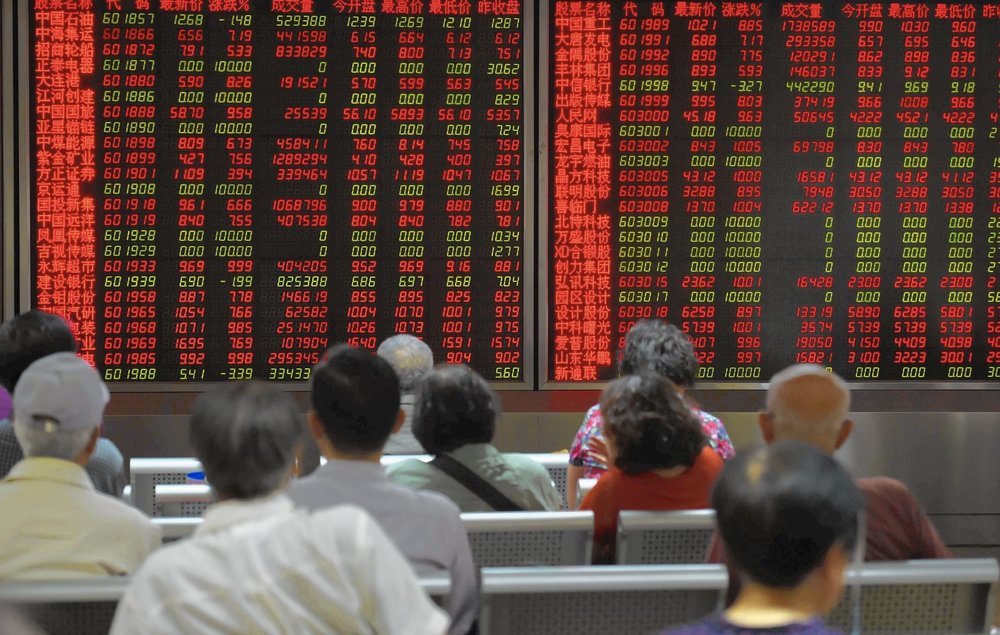The fourth of July celebrations have long since died down and Wall Street shouldn’t expect any more fireworks after the first half of July either, according Stock Trader’s Almanac which proves through historical data that stock gains have almost always been concentrated within the first half of the month.

Historic data shows that stock market gains have almost always been concentrated within the first half of July
A Historic Trend
2018 has brought with it heavy stock market volatility and unpredictability but July has been a solid month so far for major equity indexes like the Dow Jones Industrial Average DJIA which has gone up by 1.9 per cent in just the first week of July.
Meanwhile, Nasdaq Composite Index COMP has gained 2.8 per cent and S&P 500 SPX, 2.1 per cent. But the unusually high stock market performance in the first half of July shouldn’t come as a surprise, judging from historical trends.
According to Stock Trader’s Almanac, S&P and Dow usually go up in performance in July, although the gains are almost always concentrated in the first fourteen days of the month. This means that investors who haven’t taken advantage of the market’s seasonal trend yet have already missed out on the opportunity of making profits.
The WSJ Market Data Group agrees that the market almost always open strong in the beginning of July but finishes weak at the end of the month. The Fourth of July holidays often distract people from the market with fireworks, road trips and barbeques but once the market returns to routine trading days around the eighth day, stocks pick up pace rapidly and the market rallies until mid-July.
S&P’s Performance Over the Decades
The trend goes all the way back to 1950’s and historical data shows that S&P 500’s performance in the first half of July has risen by 1.45 per cent on average ever since the index’s inception. The gains decrease in the second half of the month below 0.1 per cent on average.
The trend has been even more pronounced in the past decade during which the index has experienced up to 2.16 per cent increase in value at the beginning of July but slowly plummeting below 0.1 per cent by the end of the month. Now with only a few days remaining until the month enters its latter half, the S&P index is right on track of its performance trend.
If the index performance shifts in the direction predicted by Stock Trader’s Almanac in the second half of July, it would not have a significant effect on the current market trend. So far this year, Nasdaq has proven to be a clear winner in the market, jumping up by a whopping 12 per cent due to profitable technology and internet sectors. Meanwhile the Dow has made a 0.1 per cent gain whereas S&P is up by 3.8 per cent.
Increased Volatility Ahead
Analysts are also warning investors that they’re in for a bumpy ride ahead due to increased stock volatility in upcoming weeks. Paul Tudor Jones, manager of a hedge fund predicts an uptick in volatility in the final quarter of 2018 due to the current geopolitical conditions that are creating confusion at every level.

Paul Tudor Jones, manager of a hedge fund predicts an uptick in volatility in the final quarter of 2018 due to ongoing trade conflict between China and United States
Donald Trump’s trade policies and the ongoing conflict with China have brought a lot of uncertainty into the market. Corporate earnings and economic growth could quickly spiral downwards if China and U.S. were to engage in a full-on trade war in the future.
Blackstone’s investment strategist, Joe Zidle, thinks that trade is going to be a huge risk in the market’s future growth due to rising protectionism which could cause inflation. Art Hogan, chief market strategist at B, says that growth in the third and fourth quarter could be slower than year-on-year average due to trade uncertainty that is causing companies to be more conservative in their decision making, which will hamper corporate spending and investment activity.
Some observers, including the former Chairman of the Federal Reserve Board, Ben Bernanke, have even predicted a total stock market crash, spiraling into another major economic recession due to the recent geopolitical circumstances and interest hikes by the Federal Reserve Bank.










